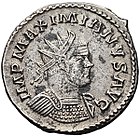A cafeteria plan or cafeteria system is a type of employee benefit plan offered in the United States pursuant to Section 125 of the Internal Revenue Code.[1] Its name comes from the earliest such plans that allowed employees to choose between different types of benefits, similar to the ability of a customer to choose among available items in a cafeteria. Qualified cafeteria plans are excluded from gross income.[2] To qualify, a cafeteria plan must allow employees to choose from two or more benefits consisting of cash or qualified benefit plans.[3] The Internal Revenue Code explicitly excludes deferred compensation plans from qualifying as a cafeteria plan subject to a gross income exemption.[4] Section 125 also provides two exceptions.[5]
If the cafeteria plan discriminates in favor of highly compensated employees, the highly compensated employees will be required to report their cafeteria plan benefits as income.[6] The second exception is that if "the statutory nontaxable benefits provided to key employees exceed 25 percent of the aggregate of such benefits provided for all employees under the plan," then the key employees must report their cafeteria plan benefits as income.[7] Effective January 1, 2011, eligible employers meeting contribution requirements and eligibility and participation requirements can establish a "simple" cafeteria plan. Simple cafeteria plans are treated as meeting the nondiscrimination requirements of a cafeteria plan and certain benefits under a cafeteria plan.[8]
